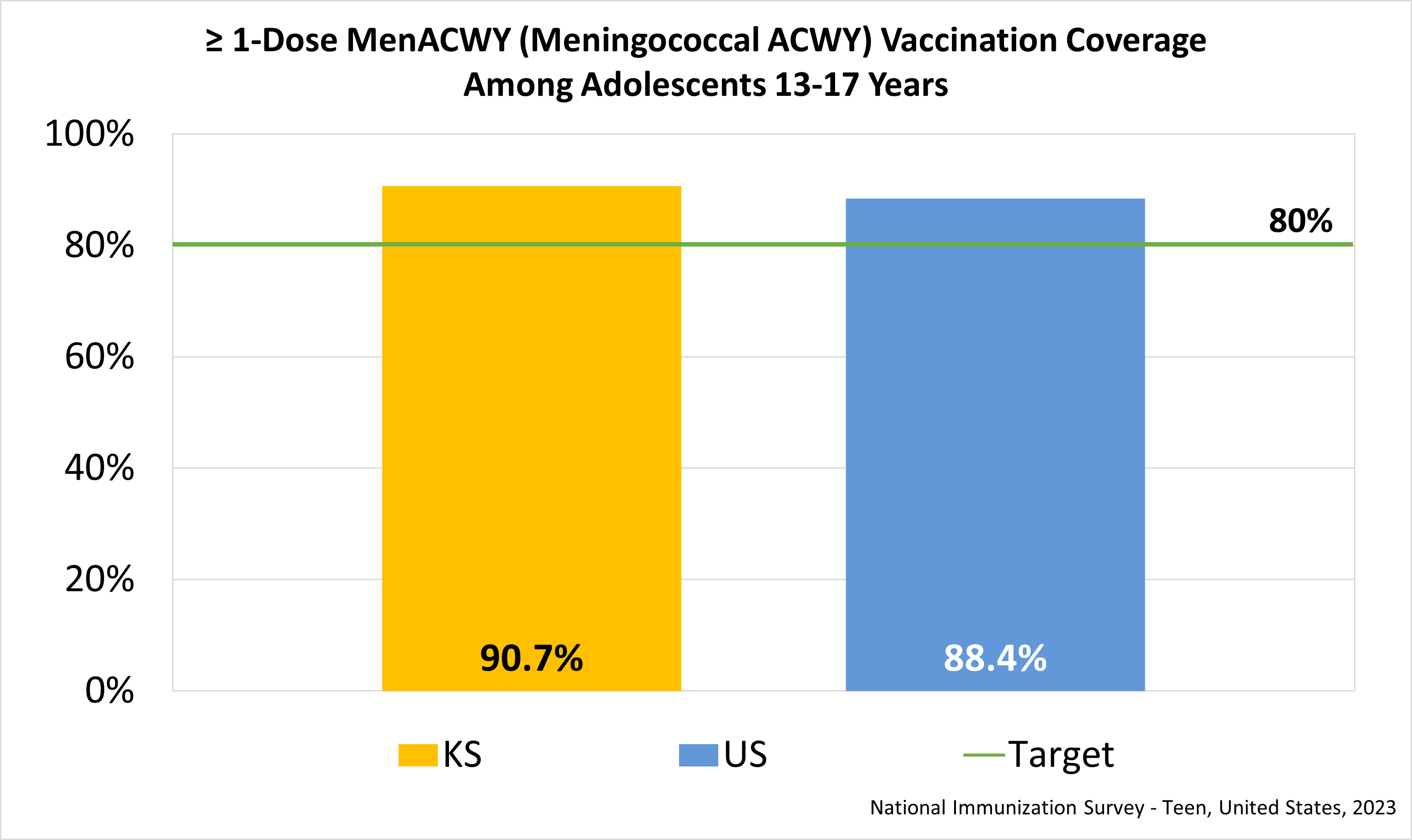New Kansas Adolescent Vaccine Data:
New 2023 NIS-Teen (National Immunization Survey - Teen) vaccination data were recently released. Read the CDC MMWR Report and check out the data on the interactive TeenVaxView tool. In this article, we'll give a brief breakdown of the HPV, MenACWY, and Tdap vaccination rates for Kansas and show where we're at now compared to previous years, the U.S., and our targets.
This data (and more!) are also available on the IKC Data Dashboard.
In summary, Kansas mirrored national data for adolescents age 13-17 years, holding mostly steady with mixed results by antigen. See additional details below. Most increases and decreases observed were not statistically significant. Above all, the data demonstrates that there is still work to do in all areas, particularly related to HPV vaccines. We will continue to monitor trends and work together to promote vaccines in Kansas!

2023 Kansas Rates with Confidence Intervals
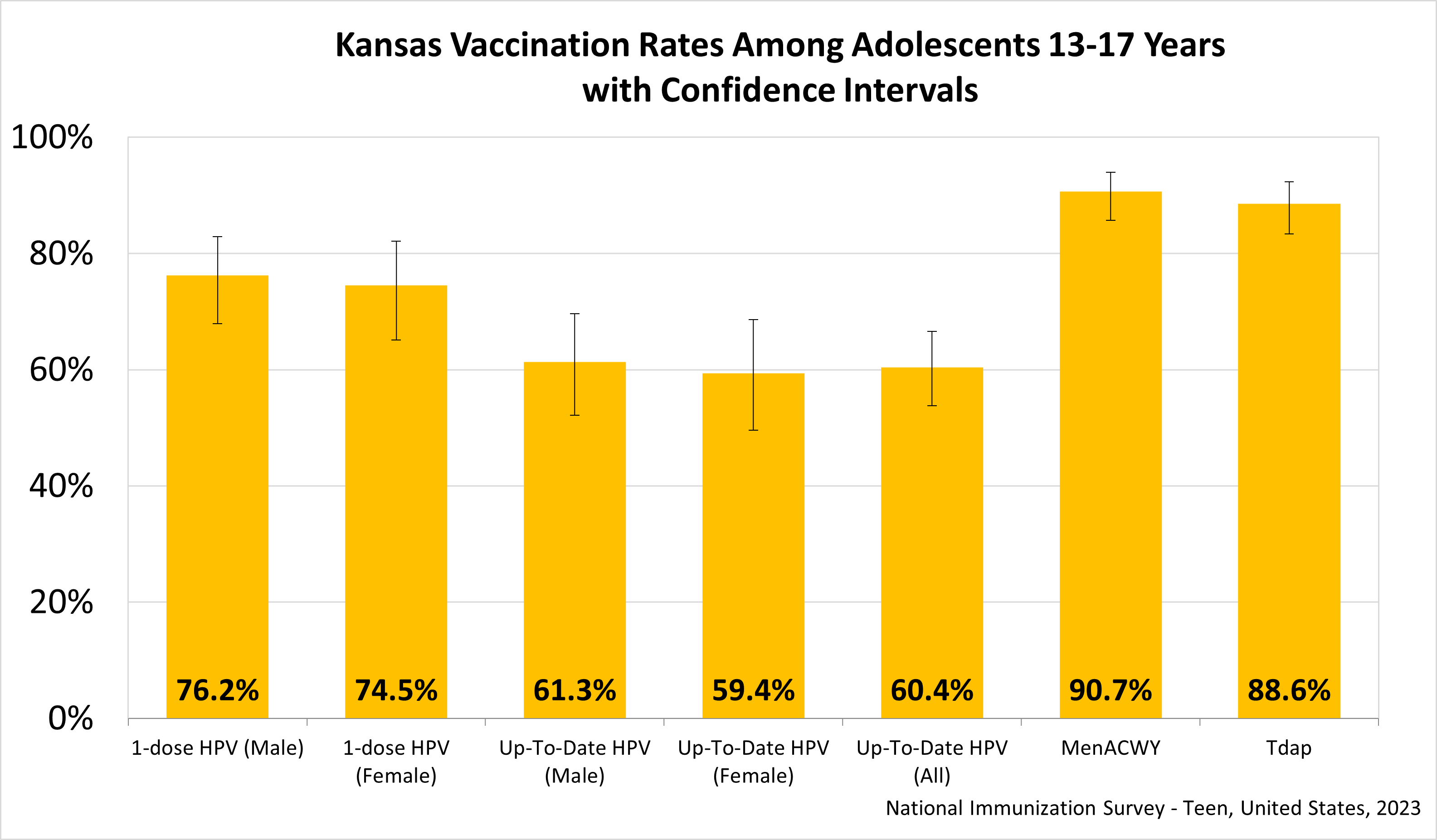
The following graphs and estimates summarize changes without speaking to statistical significance.
See CDC's TeenVaxView for additional data on other states, sample sizes, and confidence intervals for estimates.
HPV (Human papillomavirus) Vaccination
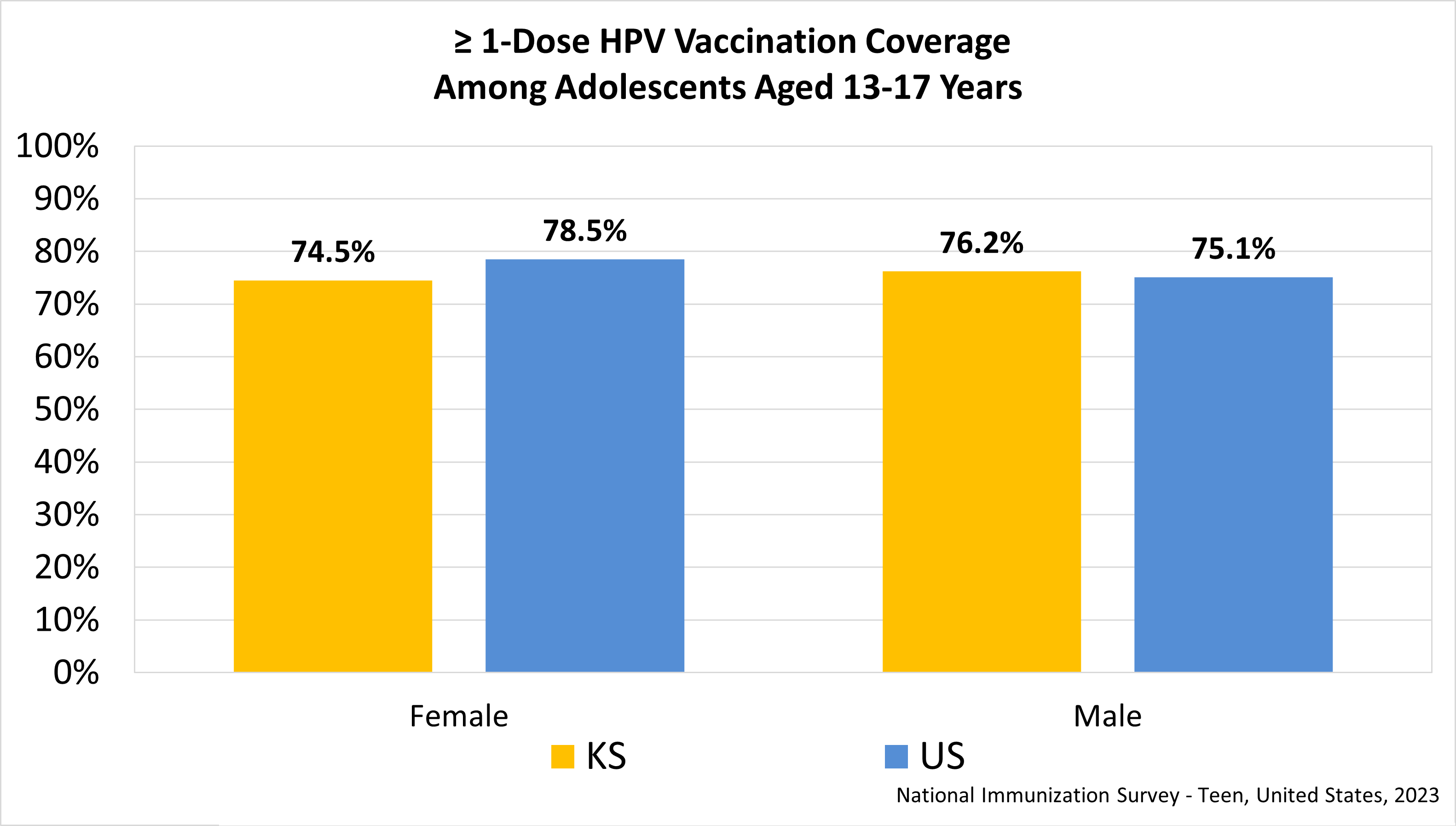
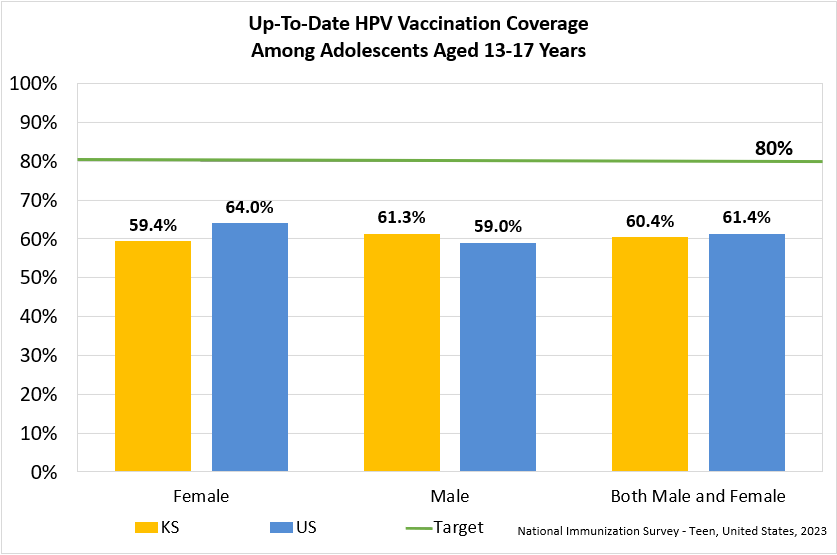
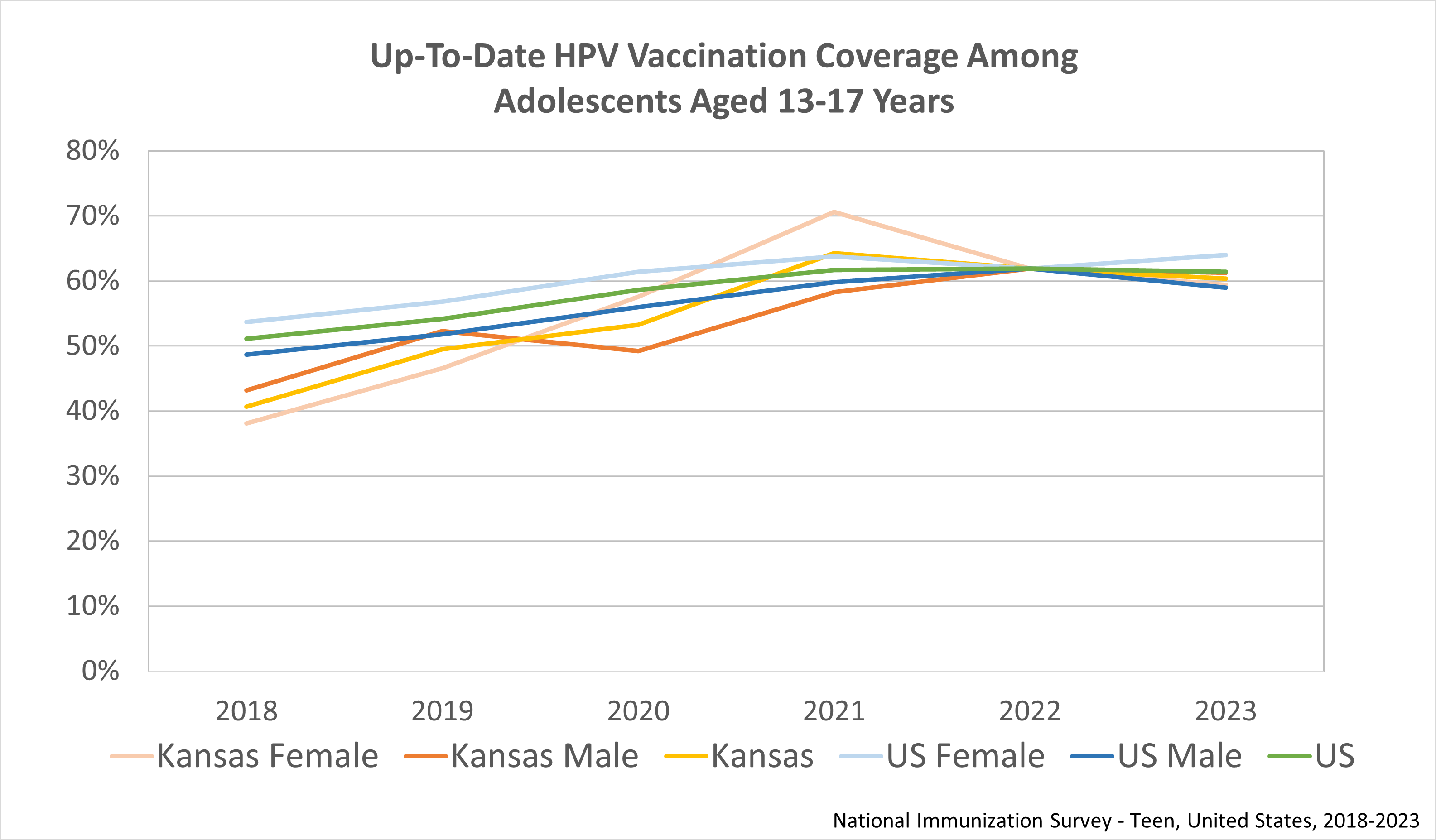
2023 Compared to 2022 NIS-Teen Estimates:
In the below summaries, fonts are color-coded as follows regarding changes from 2022 to 2023 data:
Note: Color coding does not speak to statistical significance.
Right direction
Mostly level, with slight movement in the wrong direction
Wrong direction
- Kansas Up-To-Date Males and Females went from 60.7% to 60.4%
- Kansas ≥1 Dose Females went from 73.5% to 74.5%
- Kansas Up-To-Date Females went from 61.9% to 59.4%
- Kansas ≥1 Dose Males went from 73.4% to 76.2%
- Kansas Up-To-Date Males went from 59.5% to 61.3%
- Kansas Rankings (Out of 50 States)
- #36 ≥1 Dose Females (Up from 42nd)
- #34 Up-To-Date Females (Up from 37th)
- #29 ≥1 Dose Males (Up from 36th)
- #31 Up-To-Date Males (Down from 30th)
- #33 Up-To-Date Males and Females (Down from 32nd)
Tdap Vaccination
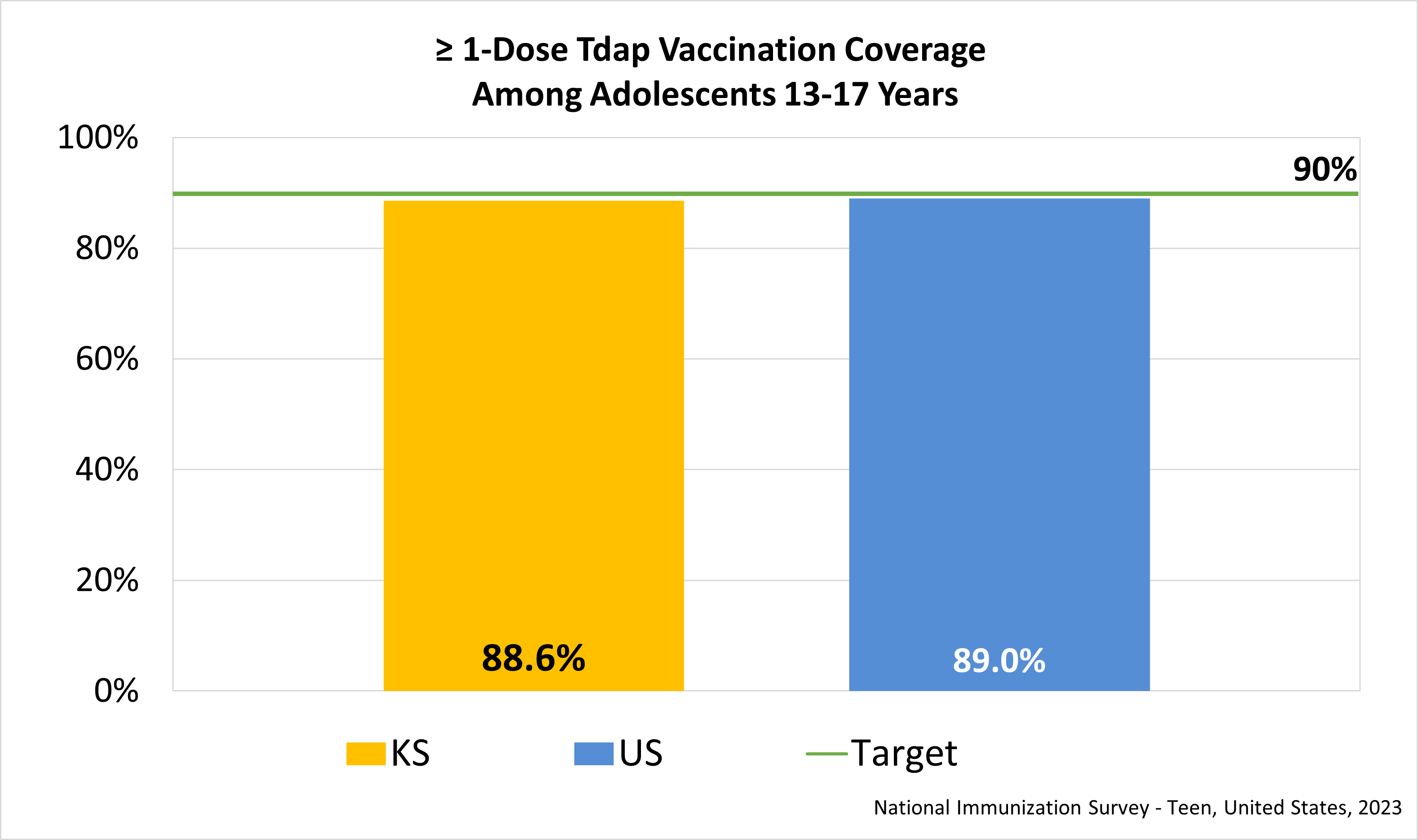
Tdap 2023 Compared to 2022 NIS-Teen Estimates:
- Kansas went from 89.2% to 88.6%
- U.S. went from 89.2% to 89.0%
- Kansas Ranking (Out of 50 States) was #38 (Maintaining the same ranking as in 2022)
- Kansas Ranking (Out of 50 States) was #41 (Down from 34th in 2020)
Td or Tdap Data Tracking:
- Kansas went from 89.5% to 89.3%
- U.S. went from 91.7% to 90.5%
- Kansas Ranking (Out of 50 States) was #38 (Up from 41 in 2022)
Additional vaccine antigen data is available on TeenVaxView: HepA, HepB, MMR, and Varicella.
IKC's Data Dashboard is your go-to source for the latest Kansas immunization data, compiled and linked all in one place.
Thank you again to everyone who continues to work to improve adolescent immunization rates in Kansas!
Together, we will ensure Kansans teens are protected from HPV, meningitis, tetanus, and other vaccine-preventable diesease.


